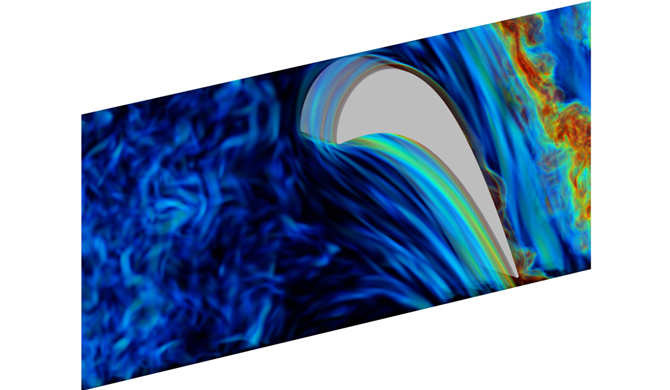Techsburg, AFRL, and Dassault Systèmes to present paper at 2025 ASME IGTI Turbo Expo June 16-20 in Memphis, TN entitled "Simulation Approach for High-lift, High-work Low Pressure Turbine Aerodynamics Using the Lattice-Boltzmann Method"

A simulation approach was established for the application of lattice-Boltzmann method (LBM) CFD to low pressure turbine (LPT) aerodynamics for 2.5D linear cascades of LPT airfoils at low Reynolds numbers. This methodology was evaluated for six LPT airfoil geometries developed at AFRL (four high-lift, two high-lift/high-work) over realistic Reynolds lapse ranges. Predicted loss, loading, and suction surface boundary layer state were compared against prior linear cascade wind tunnel measurements acquired in the AFRL Low Speed Wind Tunnel Facility.
The chief computational strategy for the LBM simulations was to achieve direct numerical simulation (DNS)-level fidelity across the Reynolds range using LBM-LES, as implemented in the PowerFLOW® commercial solver developed by Dassault Systèmes SIMULIA Corporation. This DNS-level fidelity was achieved by maintaining isotropically-fine near-wall grid spacing (x+, y+, z+<1) across the Reynolds number range, and was demonstrated with a grid sensitivity study and the calculation of established grid resolution quality metrics for scale-resolving simulations. Recent enhancements to PowerFLOW®’s subgrid turbulence model were leveraged to achieve accurate predictions of laminar separation/reattachment.
Particular attention was paid to capturing the sensitivity of LPT airfoil cascade performance to freestream turbulence, accomplished via the introduction of resolved turbulence at the inlet of the LBM computational domain. Despite the DNS-level fidelity that was achieved, overall computational cost was compatible with industrial LPT airfoil design cycles, owing to careful scaling of the 2.5D span and simulation physical time as a function of Reynolds number. Several challenges were identified, including the occurrence of Reynolds lapse hysteresis for certain airfoils and relatively higher computational cost at the highest Reynolds numbers studied.
